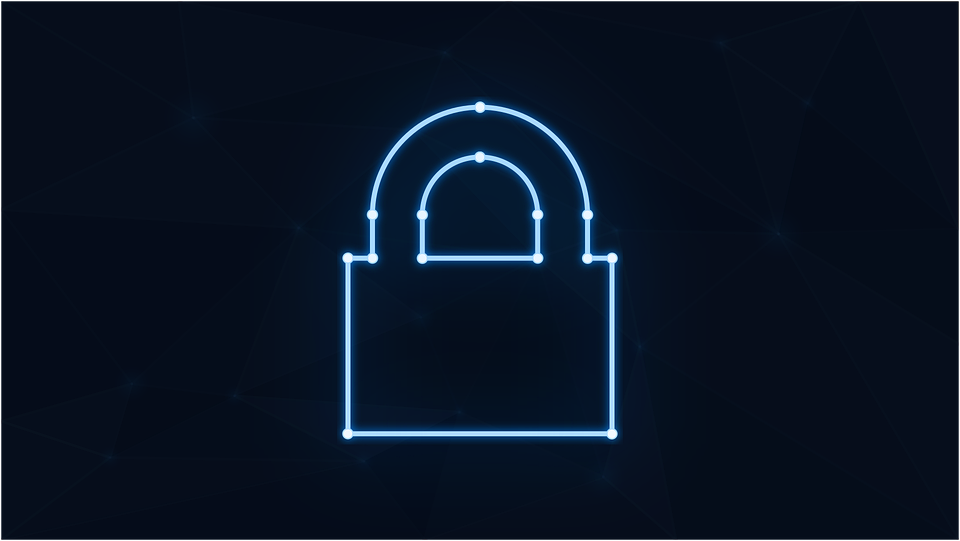
There are a good number of components to a network security strategy that enables you to stay ahead of threats, which can be a challenge for organizations of all sizes. Reported global security incidents increased by 69.8% just between February and March of 2024. To protect your organization, it’s important to use a structured approach to cybersecurity.
For 2024, NIST (the National Institute of Standards and Technology) has created an updated Cybersecurity Framework (CSF), the NIST CSF 2.0, which provides an industry-agnostic approach to security. It's designed to help companies manage and reduce their digital security risks.
Building on the success of its predecessor, CSF 2.0 is a comprehensive update that offers a more streamlined and flexible approach to your network’s security. The goal of this guide is to simplify the framework as well as make it more easily accessible to small and large businesses alike.
The Core of NIST CSF 2.0
The focus of what CSF 2.0 represents is found in the Core. The Core consists of five concurrent and continuous Functions. These are: Identify, Protect, Detect, Respond, and Recover. These functions provide a high-level strategic view of risks as well as an organization's management of those risks. This allows for a dynamic approach to addressing threats.
1) Identify
Identification of threats is always the first step, so this function involves identifying and understanding the organization's assets, cyber risks, and vulnerabilities. It's essential to have a clear understanding of what you need to protect. You can’t effectively install safeguards until you take stock of the importance of what you’re protecting and what you’re protecting it from.
2) Protect
Once you have identified assets and threats, the protect function focuses on implementing safeguards. These protections are to deter, detect, and mitigate risks, including measures such as firewalls, intrusion detection systems, and data encryption.
3) Detect
The most important way to minimize the potential damage from a threat is through early detection. The detect function emphasizes the importance of detection as well as having mechanisms to identify and report suspicious activity.
4) Respond
You’ve detected the threat, so now what? The respond function outlines the steps to take in the event of a security incident. This includes activities such as containment, eradication, recovery, and lessons learned.
5) Recover
This function focuses on restoring normal operations after an incident, including activities such as data restoration, system recovery, and business continuity planning.
Tailoring the Framework: Profiles and Tiers
CSF 2.0’s updated framework introduces the concept of Profiles and Tiers. These help organizations tailor their digital defense practices, customizing them to their specific needs, risk tolerances, and resources.
Profiles
This represents the aligning of the Functions, Categories, and Subcategories into Profiles. They're aligned with the business requirements, risk tolerance, and resources of the organization.
Tiers
Arranging defenses into Tiers provides context on how an organization views digital security risks, as well as the processes in place to manage those risks. They range from Partial (Tier 1) to Adaptive (Tier 4).
What Are the Benefits of Using NIST CSF 2.0?
Improved Digital security Posture: If you follow the guidance in NIST CSF 2.0, your organization can develop a more comprehensive and effective program for complete network defense.
Reduces the Risk of Cyberattacks: The framework can help your organization identify and mitigate security risks, which helps to reduce the likelihood of cyberattacks.
Better Compliance: NIST aligned CSF 2.0 with many industry standards and regulations, so adopting it can help your organization meet compliance requirements.
Better Communication: Very importantly, this framework provides a common language for communicating about security risks, which can help improve communication between different parts of your organization and keep everybody reading from the same page.
Cost Savings: For many business owners, this is the benefit that really speaks to them. NIST CSF 2.0 can help your organization save money by preventing cyberattacks and reducing the impact of those incidents that do happen.
How To Get Started with NIST CSF 2.0
There are a few things you can do to get started on a good footing with NIST CSF 2.0.
Get Familiar with the framework: Take the time and read through the NIST CSF 2.0 publication. Familiarize yourself with the Core Functions and categories.
Consider what you’re doing now: Assess your current overall security posture. This will help you identify any gaps or weaknesses.
Develop an overall security plan: Based on your assessment, develop a comprehensive plan. It should outline how you will put in place the NIST CSF 2.0 framework in your organization.
Seek professional help: No, we don’t mean a psychiatrist… If you need help getting started with NIST CSF 2.0? Seek out a Managed IT services partner. We’ll offer guidance and support.
If you follow these steps, you can easily begin to deploy NIST CSF 2.0 effectively within your organization. At the same time, you'll be improving your overall comprehensive digital posture.
Frequently Asked Questions
Is NIST CSF 2.0 mandatory?
NIST CSF 2.0 compliance is only mandatory for federal contractors and government agencies. It is recommended for commercial organizations and others looking to effectively manage security risks.
How popular is NIST CSF?
A study found that 70% of organizations surveyed see the NIST Framework as a popular best practice for computer security, but many note that it requires significant investment.
Is NIST CSF a certification?
There is a certification available. The Certified NIST CSF 2.0 LI certification certifies your ability to implement the formal structure, governance, and policy of a robust security framework following internationally recognized and respected NIST best practices and standards.
Who are the competitors of NIST?
The main competitors of NIST include CIS (Center for Internet Security) and ISO (International Organization for Standardization) groups.
How secure is your network?
As a reputable member of the IT Support Los Angeles community since 2002, IT Support LA offers a FREE, no-risk network and security assessment. It is a non-intrusive scan that allows us to deliver a comprehensive report that is yours to keep. No strings, and no obligation to ever use our Managed IT Services.
The best defenses are expert network security to protect your data from theft, and a top-notch Managed Services Provider (MSP) to ensure continued reliability and defenses against newly emerging threats.
With our 100% Money Back Guarantee in writing, we offer a risk-free way for prospective clients to try us out. Because we do not require a ‘hard’ contract, our clients can fire us at any time with 30 days’ notice. We have to be good.
Among the Managed IT services we provide:
IT HelpDesk Service
Onsite IT Support
Cybersecurity
Cloud migration and management
Email migration services
Backup and disaster recovery
VoIP phone systems
IT disposition and recycling
Office moves
White label services (IT to IT)
IT Support LA is an award-winning Managed Services Provider (MSP):
o 3 Years awarded Best IT Support by the Small Business Expo
o Awarded 2nd best company of any type in the US by the Small Business Expo SB100
o Awarded Best IT in California by Channel Futures
o Winner of Best IT in Los Angeles by Channel Futures
o Listed as one of the world’s Top 501 MSPs by CRN and in the top 250 in the ‘Pioneer’ listing
o 4 years listed as one of the Top 501 MSPs in the World by Channel Futures
o Listed as #21 MSPs in the World in Channel Futures NextGen 101
o Globee 2021 Bronze Award winner for Chief Technology Officer of the Year
o Globee 2022 Gold Award winner for Chief Technology Officer of the Year
o Named one of 2022’s 50 ‘Best’ businesses in California by UpCity
o Named Best of IT winner by UpCity
o Winner of Local Excellence Award for 2021, 2022 and 2023 by UpCity
o Named Best of Cloud Consulting winner by UpCity
o Certified as Top Managed Services Provider and Cybersecurity Pro by UpCity
o Named Best IT in Los Angeles by Expertise.com.
Schedule a Security Assessment Today
The NIST CSF 2.0 is a valuable tool. It can help organizations of all sizes manage and reduce their cybersecurity risks. Follow the guidance in the framework. It will help you develop a more comprehensive and effective network security program.
Are you looking to improve your organization's overall security posture? NIST CSF 2.0 is a great place to start. We can help you get started with a security assessment. We’ll identify assets that need protecting and security risks in your network. We can then work with you on a budget-friendly plan.
Contact us today to learn more and take advantage of our FREE no-risk network and security assessment, just fill out the form on this page or call us at:
818-805-0909


